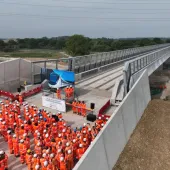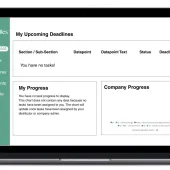New Gateway 2 guidance raises bar for concrete construction
The Construction Leadership Council (CLC) has released new industry guidance on Gateway 2 Building Control Approval Applications for higher-risk buildings (HRBs) — a move with significant implications for concrete contractors, engineers and design teams.
Under the Building Safety Act 2022 and Building (Higher-Risk Buildings Procedures) Regulations 2023, Gateway 2 is the formal checkpoint where developers must prove their designs meet Building Regulations before work can begin on site. This applies to all new HRBs in England — typically concrete-framed structures such as residential towers, hospitals and care homes.
Published in collaboration with the Building Safety Regulator (BSR), the new guidance provides detailed expectations for structural, fire and materials documentation — key areas for concrete and formwork specialists.
“Applications must demonstrate that the functional regulatory requirements of the Building Regulations can and will be met,” the CLC states, urging clearer design strategies and sequencing information from the outset.
For the concrete sector, the guidance raises several important considerations:
- Structural design teams must now show a sufficient level of design detail at the point of Gateway 2 submission, including how concrete elements meet relevant codes and fire performance standards.
- Formwork and falsework providers face increasing scrutiny, with expectations around sequencing, competency and temporary works planning likely to tighten.
- Precast suppliers and in-situ teams will need to coordinate closely to ensure materials and methods align with declared safety and durability objectives.
- Low-carbon concrete innovations may benefit from the increased focus on traceability and product performance, offering an opportunity to showcase new solutions within compliant frameworks.
The CLC’s seven-point guidance suite covers everything from baseline submission content and project briefs to document management and multi-building strategies. The overarching goal is to improve the quality of industry submissions and reduce delays in the approval process — which could otherwise hold up major pours and production schedules.
“This will help improve the quality of submissions, ensure the regulator can approve them swiftly and consistently, and enable the sector to increase the delivery of safe and high-quality homes,” said Karl Whiteman, CLC industry sponsor and divisional chairman at Berkeley Group.
The full suite is available via the CLC website.







